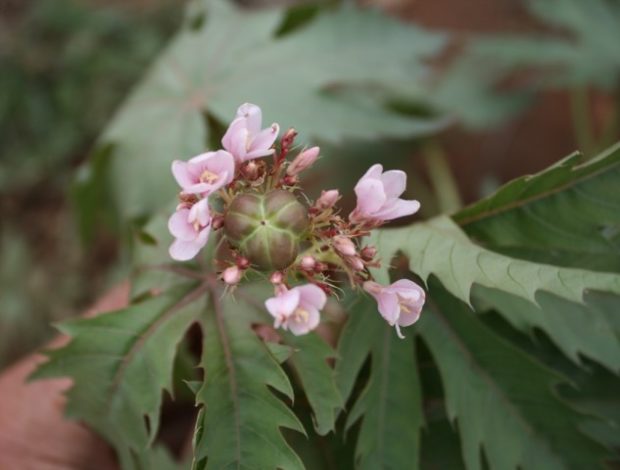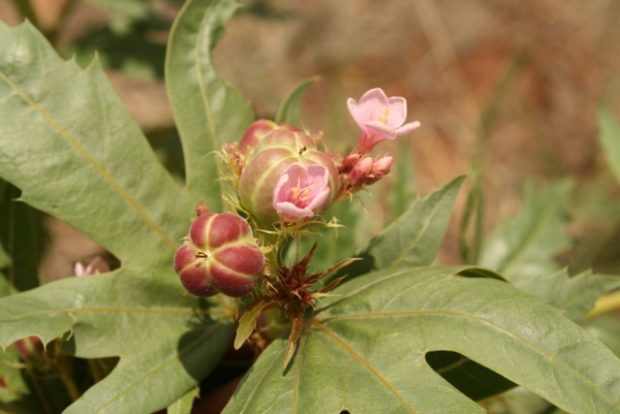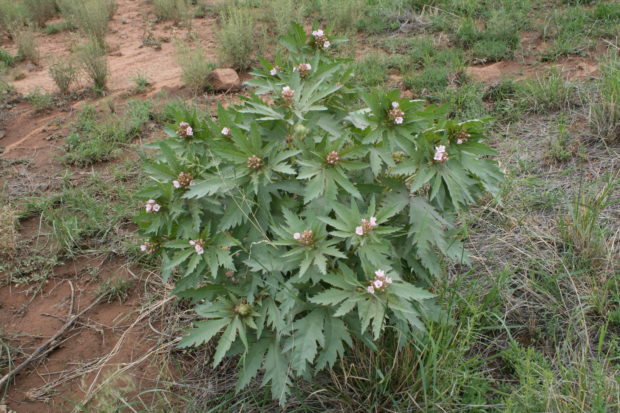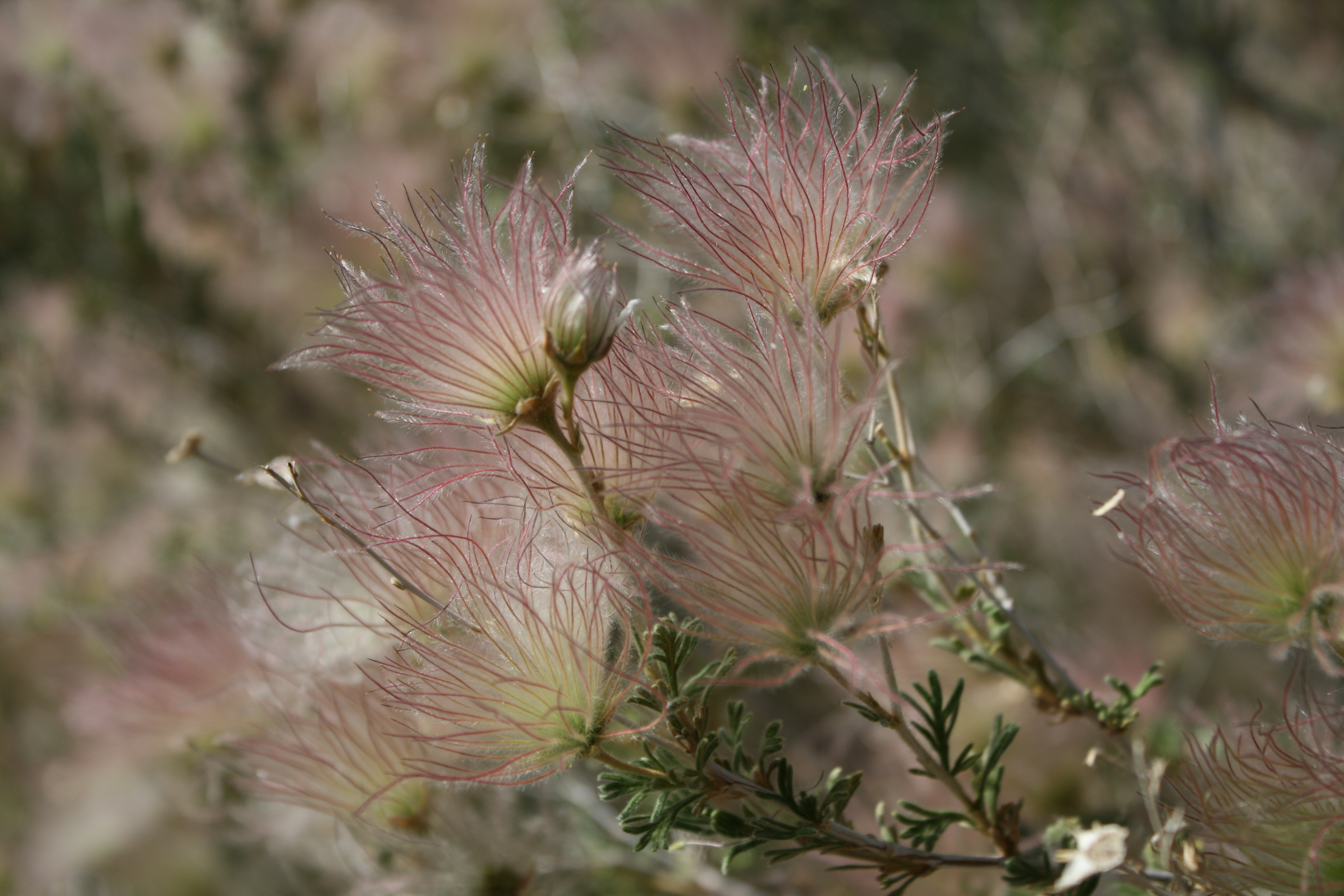Since producing this episode of Growing Native we have encountered Jatropha macrorhiza a couple more times. A recent sighting was over near the New Mexico and Arizona border on a rugged limestone slope. A slope with numerous plant species that would make any plant geek’s heart race. Sandpaper oak, buck brush, three species of sumac, bee brush, mariola, winter fat, snap dragon vine, honey mesquite, mimosa, ocotillo, agave, hedgehog cactus and I know I’m forgetting some, but yes, Jatropha macrorhiza was found in the mix as well. Heart be still!
There are four species of Jatropha found in Arizona. They’re the kind of plant that make you want to showcase them in a pot just like the cactus on your patio. I’ll never forget seeing J.cuneata out on the Cabeza Prieta and I love J. cardiophylla in the desert that surrounds Tucson (on A Mountain, for goodness sake!). Jatropha cinerea occurs in the Organ Pipe National Monument. Good native plant nurseries offer these very cool plants in the spurge family Euphorbiaceae. There are, by the way, around one hundred twenty-five species of Jatropha found around the world. Collect the whole set!

For a long time, I have pronounced Jatropha with the accent on the middle syllable, but years ago my friend and legendary botanist Richard Felger gently prodded me to pronounce it with the accent on the first syllable so, JAT-ro-fa. Pronounce it however you like, but I’m pronouncing it as Felger prodded and so this show is for him. I finally got it right, Richard.
The photos are mine and taken on the day described in this episode. Hopefully they prove that Jatropha macrorhiza is not only charismatic, but also photogenic. Grow Native!



For goodness sake, I forgot to mention the black-tailed jackrabbit’s ears! The large ears are magnificent parabolic reflectors that keep them well informed of...

Apache plume (Fallugia paradoxa) is very common around out little homestead. There are thickets of it all along the banks of the Ol’ Guajolote....

This poem was originally written as part of the 2012 poetic inventory of the Saguaro National Monument East. Writers, poets and at least one...